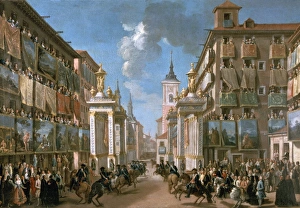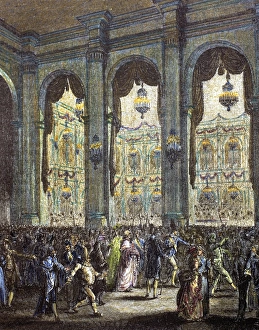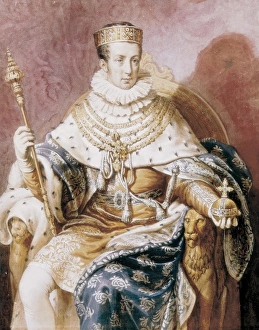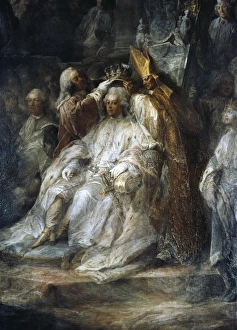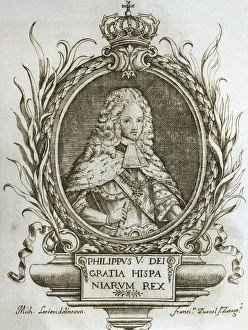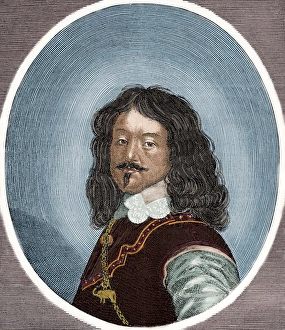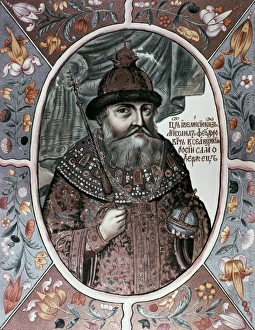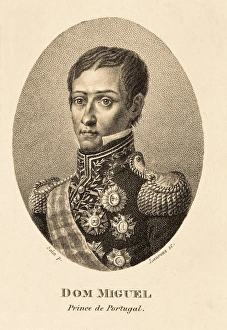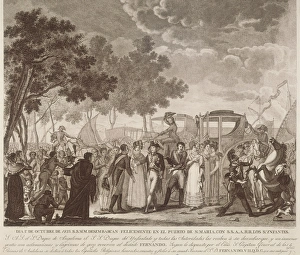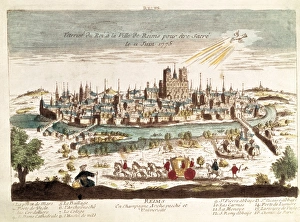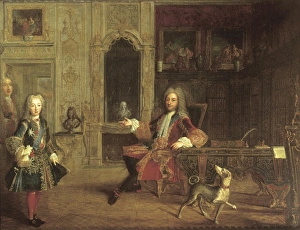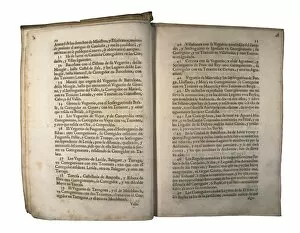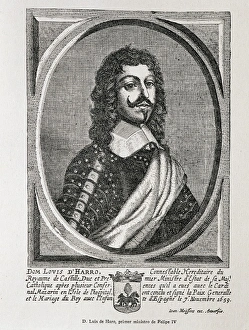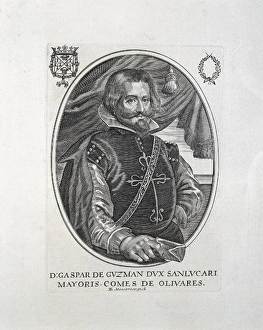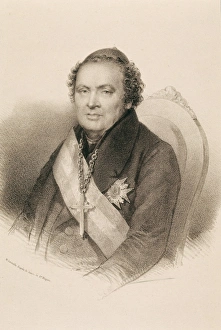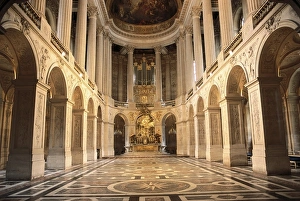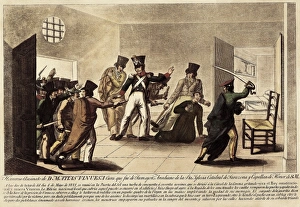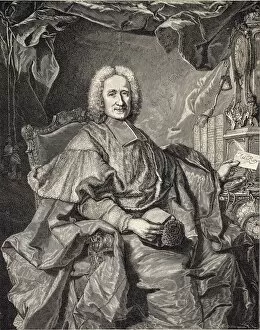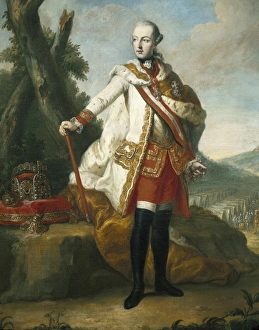Absolutism Collection (page 6)
"Absolutism: A Journey Through the Ages" Step into the world of absolutism, where power and authority reigned supreme
All Professionally Made to Order for Quick Shipping
"Absolutism: A Journey Through the Ages" Step into the world of absolutism, where power and authority reigned supreme. Witness history unfold as we delve into key moments and figures that shaped this era. In 1793, the Place de la Revolution witnessed a pivotal event - The Execution of Louis XVI. This shocking act symbolized the downfall of monarchy and marked a turning point in French history. Meanwhile, Francisco Javier Mina, a Spanish army officer in the late 18th century, fought against absolutist regimes. His bravery and determination challenged oppressive rule. Ferdinand VII donned the Habit of the Order of Charles III, representing his reign as an absolute monarch. However, even within these regal trappings lay political turmoil and conspiracies like Valeriano Dominguez Becquer's Carlist movement in 1856. Karl Ludwig von Haller was a Swiss jurist who explored theories on absolutism. His ideas influenced legal systems across Europe during this time period. Amidst it all, masquerade balls provided an escape from reality for France's elite in the 18th century. These extravagant events showcased both opulence and secrecy behind closed doors. Emperor Ferdinand I of Austria embodied absolute power throughout his long reign from 1793 to 1875. His actions would shape not only Austria but also Europe at large. Carl Gustav Pilo immortalized grandeur through his painting "The Coronation Of, " capturing royal ceremonies that celebrated absolute rulership with pomp and splendor. Portraits bring us face-to-face with influential figures such as Fernando VI or King Philip V of Spain - their expressions revealing glimpses into their reigns characterized by autocratic rule. Francisco Javier de Elio stood tall as an absolutist military leader and governor of Montevideo during tumultuous times when Spain sought to maintain control over its colonies abroad. Absolutism may have faded away, but its impact on history remains undeniable.


